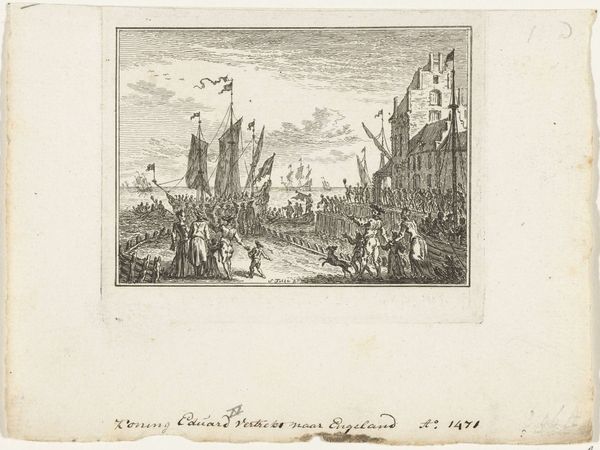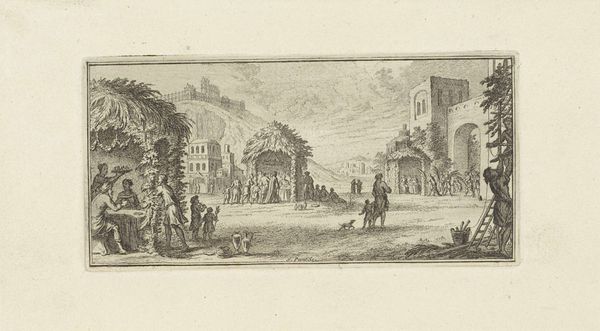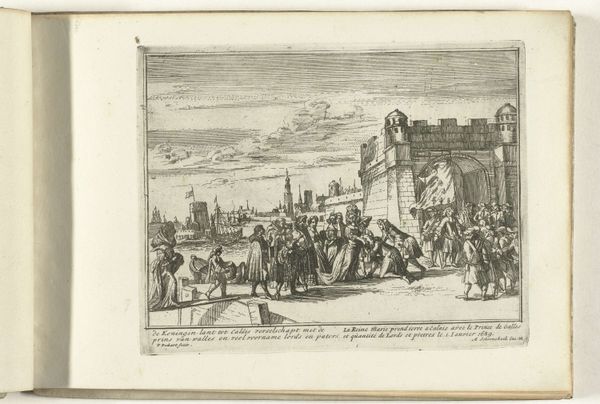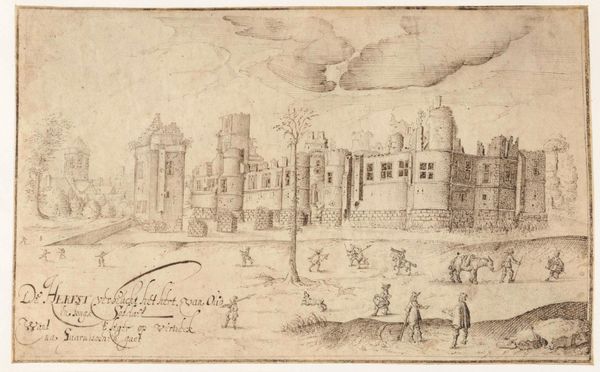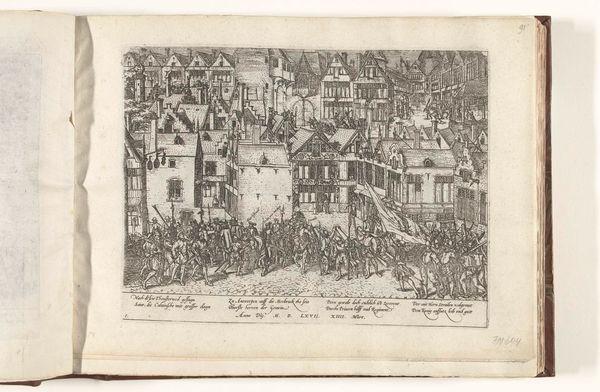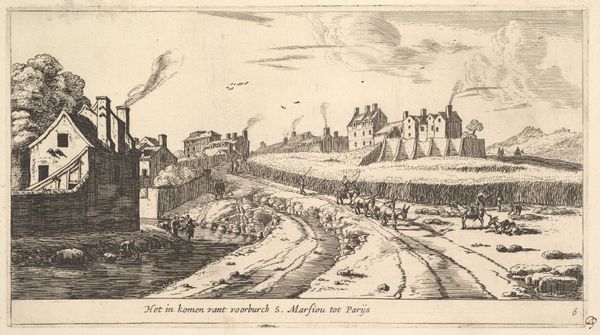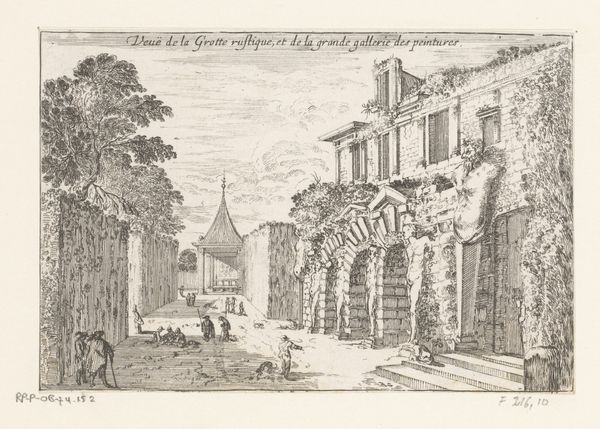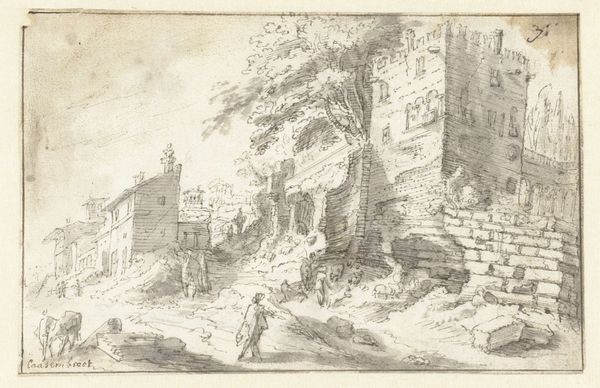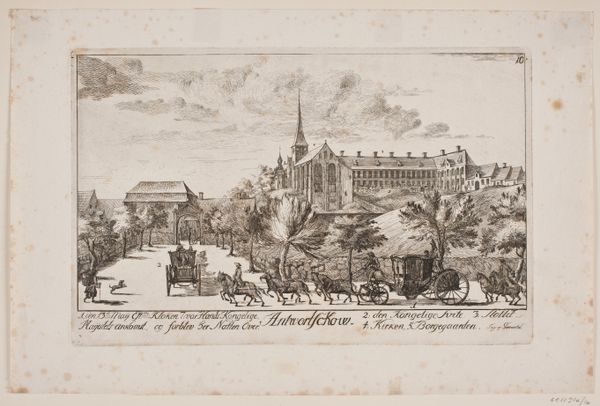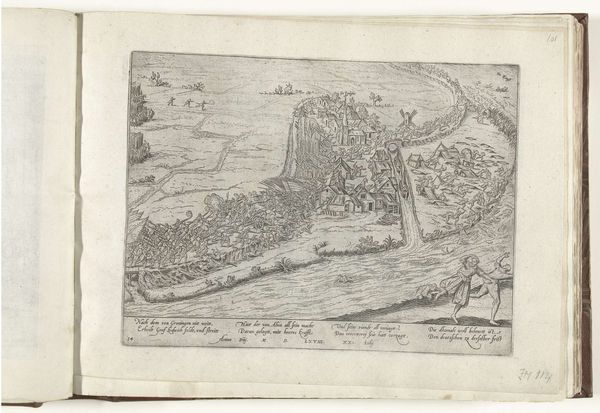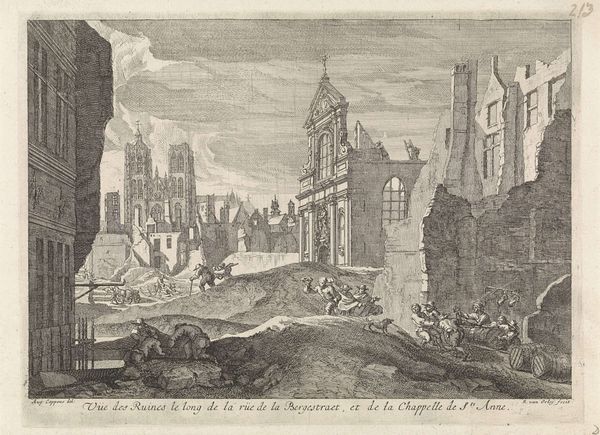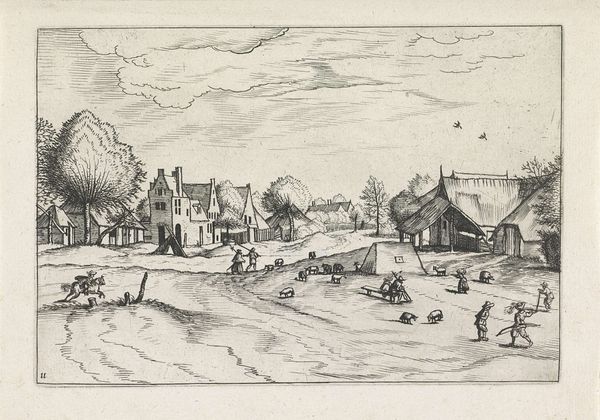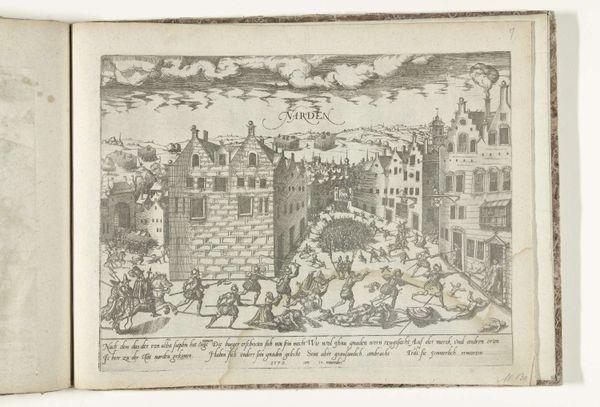
Dimensions: height 104 mm, width 130 mm
Copyright: Rijks Museum: Open Domain
Eberhard Cornelis Rahms made this print of the plundering and murder in Oudewater in 1575. It's an etching, a process by which lines are incised into a metal plate, and then inked and printed onto paper. Look closely, and you can see the qualities that etching brings to this image: a network of fine, precise lines, which give a sense of both detail and frenetic energy. Notice how the lines create a sense of depth, and texture, particularly in the rendering of the architectural structures and the chaos of human figures. This wasn't just a feat of technical skill; it was also a powerful form of visual communication. The relatively low cost of printmaking, compared to painting, allowed for broad distribution of imagery. Prints like these helped to shape public opinion. They played a crucial role in how events like the plundering of Oudewater were remembered and understood. By focusing on the making, materials, and social context of this print, we gain a deeper understanding of its historical significance. It challenges the traditional distinction between fine art and craft.
Comments
No comments
Be the first to comment and join the conversation on the ultimate creative platform.
